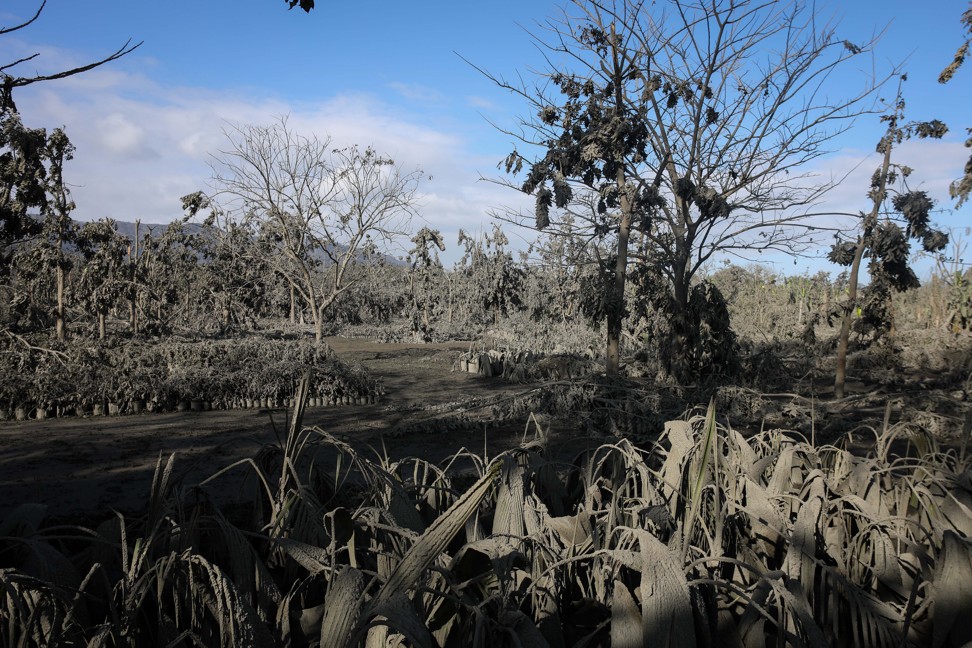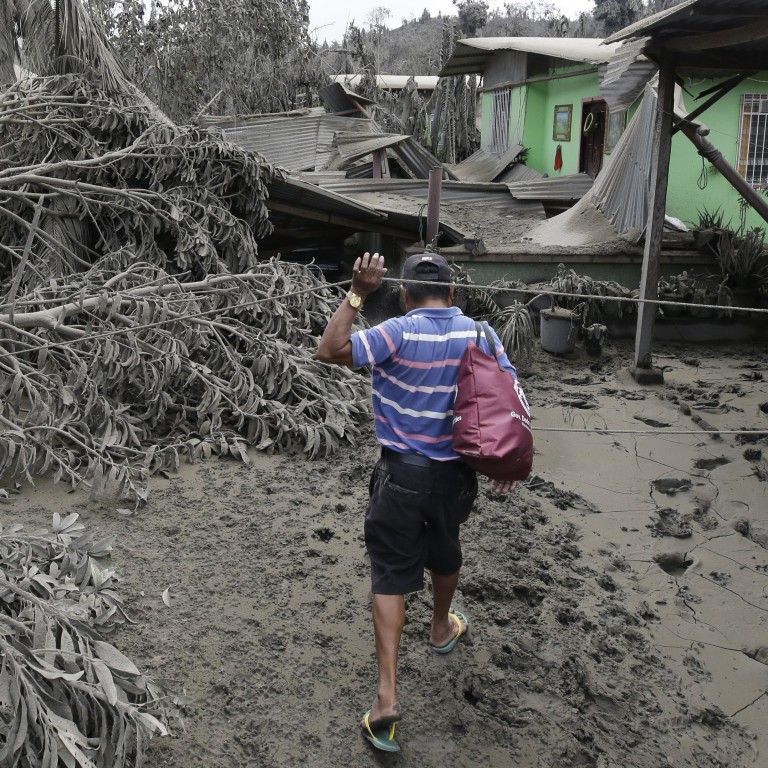
Taal Volcano: as Philippines races to evacuate residents, some decide to stay home
- With an eruption imminent, officials are racing against time to evacuate people living near the volcano, but some residents are staying put
- Meanwhile, stocks of face masks in Manila have run low, prompting one official to suggest that people should fashion their own using undergarments
Philippine police on Tuesday placed a lockdown on towns near the erupting Taal Volcano to prevent residents from returning, as thousands fled for refugee centres, braving roads turned grey with ashfall and leaving behind their homes, farms and animals.
Everyone living within 14km (7 miles) of the volcano has been ordered to leave, with the disaster agency saying some 38,200 people had been evacuated, although local officials complained some residents were complicating the effort by staying put.
New cracks in the ground appeared near the volcano in Batangas province, 65km (40 miles) south of Manila – a sign magma could be rising from underground, the Philippine Institute of Volcanology and Seismology (Phivolcs) said on Tuesday, warning a massive eruption remained possible within hours or days.
One evacuee in the capital, who asked to be identified as Roxanne May, said she fled her hometown of Lemery, where “earthquakes have been continuous, there are cracks on the roads, even inside the houses”.
“Ash is all over the house and the roads are thick with ash; when it rained last night it turned into thick mud,” said May, who had worked as a nurse abroad.
“It’s the first time I’ve experienced this. The ash is everywhere and I have a two-year-old son, so I decided to go to safety,” May said.
Farm damage from the eruption, including rice, corn, coffee, cacao and bananas, had reached 577.6 million pesos (US$11.4 million), the Agriculture Department said. Mass fish deaths were expected in the lake surrounding the volcano because of toxic sulphur levels.
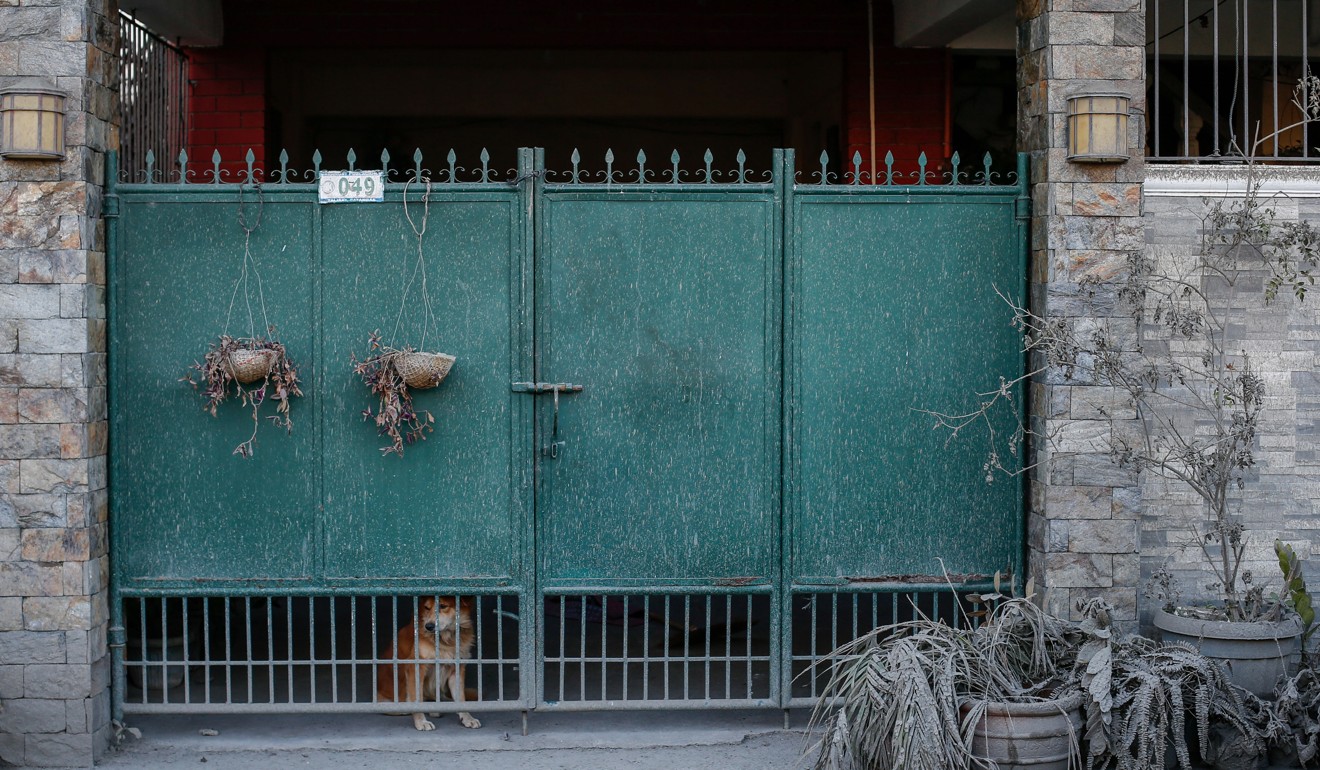
Animal rights groups were providing food and aid for pets and livestock left behind, with PETA on Tuesday urging for donations such as dog and cat food, leashes and collars to care for abandoned animals.
Save the Children Philippines said it was “deeply concerned” for an estimated 21,000 children living within the 14km danger zone radius, with humanitarian manager Jerome Balinton describing the scenes at one evacuation centre as “heartbreaking”.
“More than 900 people are sleeping on the cold, hard surface without mats,” Balinton said.
Although the volcano continues to spew a column of ash, it has remained comparatively quiet compared to Sunday, allowing some people to cross the lake and go to the crater island, Phivolcs director Renato Solidum warned against a “false sense of security”
“Residents cannot return yet because there is still danger,” Solidum said.
He added the “worst case” would be a violent eruption followed by a hot, poisonous cloud moving horizontally across the lake at 60km/h (37mph).
Taal Volcano: Philippine government fears repeat of Pinatubo disaster
“We need the cooperation of everyone,” he said in a press briefing in the presidential palace in Manila on Tuesday.
Medical doctor Ramon Castillo, who abandoned his house in Taal municipality on Monday, said when he returned to visit his home the next day, “the sun was bright, just like any other day”. But Taal and Lemery were “ghost towns”, he said.
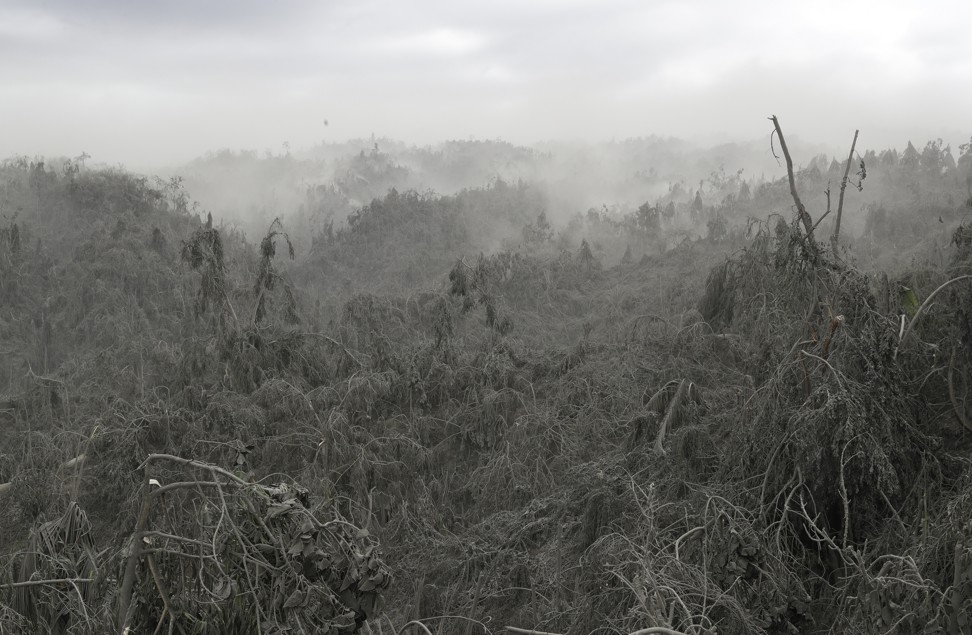
“My house is still standing, no problem so far, aside from ashfall on the roof, which I couldn’t remove. We have electricity, internet and water,” he said.
Castillo said cracks had opened up on the roads, and he almost drove into a deep depression on the highway.
Enrico Salazar Grecia, a businessman who lives in a Batangas seaside town 50km (31 miles) away from the volcano, said Sunday’s eruption sounded like “the explosion made by sticks of dynamite being thrown one after the other – it lasted about 30 seconds”.
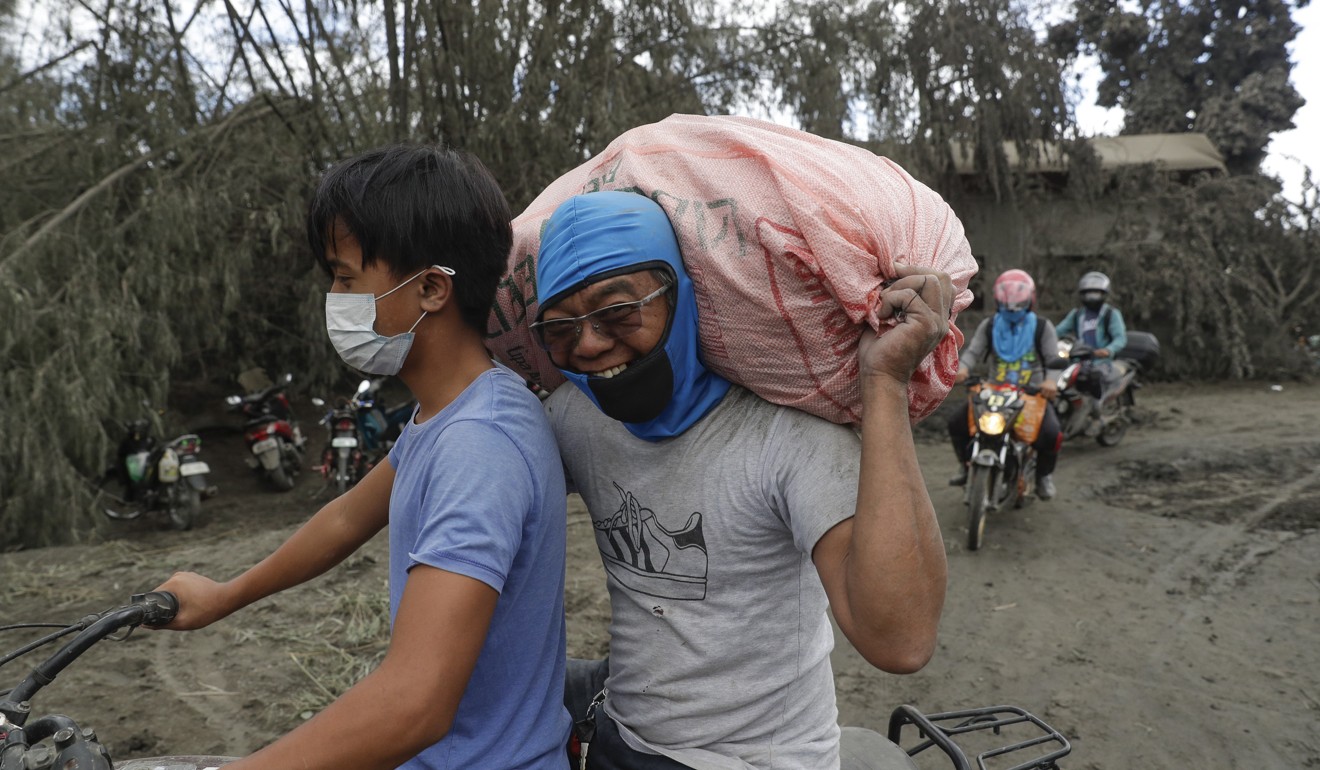
It was followed by ashfall three to four inches thick. Many red octopuses emerged from the sea near the beach after the eruption, Grecia said.
A change in wind direction spared Metro Manila, 50km away, from more ashfall, but the roofs of many houses remained streaked on Tuesday with gritty dust.
On Monday many of the city’s inhabitants stayed home, but on Tuesday traffic was approaching normal levels. There was still a demand for protective dust masks, with reports that stocks were running low or were being massively overpriced. The Chinese embassy donated 1,000 disposable face masks to Manila city on Tuesday.

Officials said people who could not find or afford the N95 dust-filtering masks could improvise their own nose and mouth coverings. According to health assistant secretary Maria Laxamana, people could be “creative” and use garments such as brassieres and underwear as well as diapers.
So far nobody has been spotted following the suggestions.
Local governments secretary Eduardo Año asked the public for “donations of clean drinking water, food, medicines and basic essentials”.
When President Rodrigo Duterte took office in 2016, one of the first things he did was to slash the national calamity budget in half, from 38.9 billion to 15.7 billion pesos (US$768 million to US$310.3 million). Last year, he again slashed the budget for the National Disaster Risk Reduction and Management fund from 31 billion to 20 billion pesos (US$612.7 million to US395.3 million).
Grecia said the situation in Batangas seemed to be better than on Sunday. “There were earthquakes every second, now it’s probably every 30 to 45 minutes.”
The businessman said he had no plans to evacuate, even as he acknowledged things were not yet normal.
“All the establishments in Lemery and Taal, including the hospital, are closed,” he said, but remained optimistic. “It’s weakening, the volcano is no longer erupting, and there’s no ashfall.”
Castillo, who worked at the Batangas Provincial Hospital before it had to be shut, said he was now helping out in the accident and emergency of a private hospital outside the danger zone.
“Most probably we will go back, I feel it’s better now, very different from Sunday and Monday,” he said. “I just want to go home.”
Additional reporting by Bloomberg, dpa, Reuters



